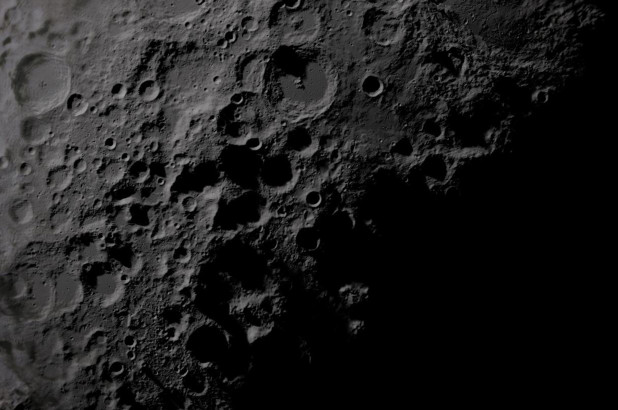月球岩石与陨石撞击有关
一项对阿波罗17号带回的月球样本的新研究,揭示了巨大的陨石如何撞击形成了部分天体卫星的外壳。
A group of scientists led by the Royal Ontario Museum found that the formation of ancient rocks on the moon may be directly related to large-scale meteorite impacts.
由加拿大皇家安大略博物馆领导的一组科学家发现,月球上古代岩石的形成可能与大规模的陨石撞击直接相关。
Experts studied a rock returned to Earth by the Apollo 17 mission in 1972, discovering that it formed at extremely high temperatures of 4,300 degrees Fahrenheit. This, they explained in a statement, can only be achieved by the melting of the outer layer of a planet in a large impact event.
专家们研究了1972年阿波罗17号任务返回地球的岩石,发现它是在4300华氏度的极高温度下形成的。他们在一份声明中解释说,这只能通过行星的外层在大的撞击事件中融化来实现。

Researchers found the former presence of cubic zirconia, which has reverted to a mineral known as baddeleyite. The analysis revealed that the baddeleyite formed over 4.3 billion years ago.
研究人员发现了以前存在的立方氧化锆,它已经变成了一种被称为巴德利岩的矿物。分析表明巴德利岩形成于43亿年前。
“It was concluded that the high-temperature cubic zirconia phase must have formed before this time, suggesting that large impacts were critically important to forming new rocks on the early moon,” the scientists said in the statement.
科学家们在声明中说:“我们得出的结论是,高温的立方氧化锆相一定是在这个时间之前形成的,这表明巨大的撞击对在月球早期形成新岩石至关重要。”
The study, which is published in the journal Nature Astronomy, sheds new light on how the outer and inner layers of the moon developed after Earth’s natural satellite formed.
这项发表在《自然天文学》杂志上的研究,为地球自然卫星形成后月球外层和内层的发展提供了新的线索。
“This new research suggests that large impacts over 4 billion years ago could have driven this mixing, producing the complex range of rocks seen on the surface of the moon today,” the researchers added in the statement.
研究人员在声明中补充说:“这项新的研究表明,40亿年前的巨大撞击可能推动了这种混合,产生了今天在月球表面看到的复杂岩石。”。
“Rocks on Earth are constantly being recycled, but the moon doesn’t exhibit plate tectonics or volcanism, allowing older rocks to be preserved,” explained Dr. Lee White, Hatch Postdoctoral Fellow at the ROM, in the statement. “By studying the moon, we can better understand the earliest history of our planet. If large, super-heated impacts were creating rocks on the moon, the same process was probably happening here on Earth.”
“地球上的岩石一直在被循环利用,但月球并没有表现出板块构造或火山作用,使得较老的岩石得以保存,”ROM的Hatch博士后Lee White博士在声明中解释道。“通过研究月球,我们可以更好地了解地球最早的历史。如果巨大的、过热的撞击在月球上形成岩石,地球上也可能发生同样的过程。”
- 频道推荐
- |
- 全站推荐
- 推荐下载
- 网站推荐


















